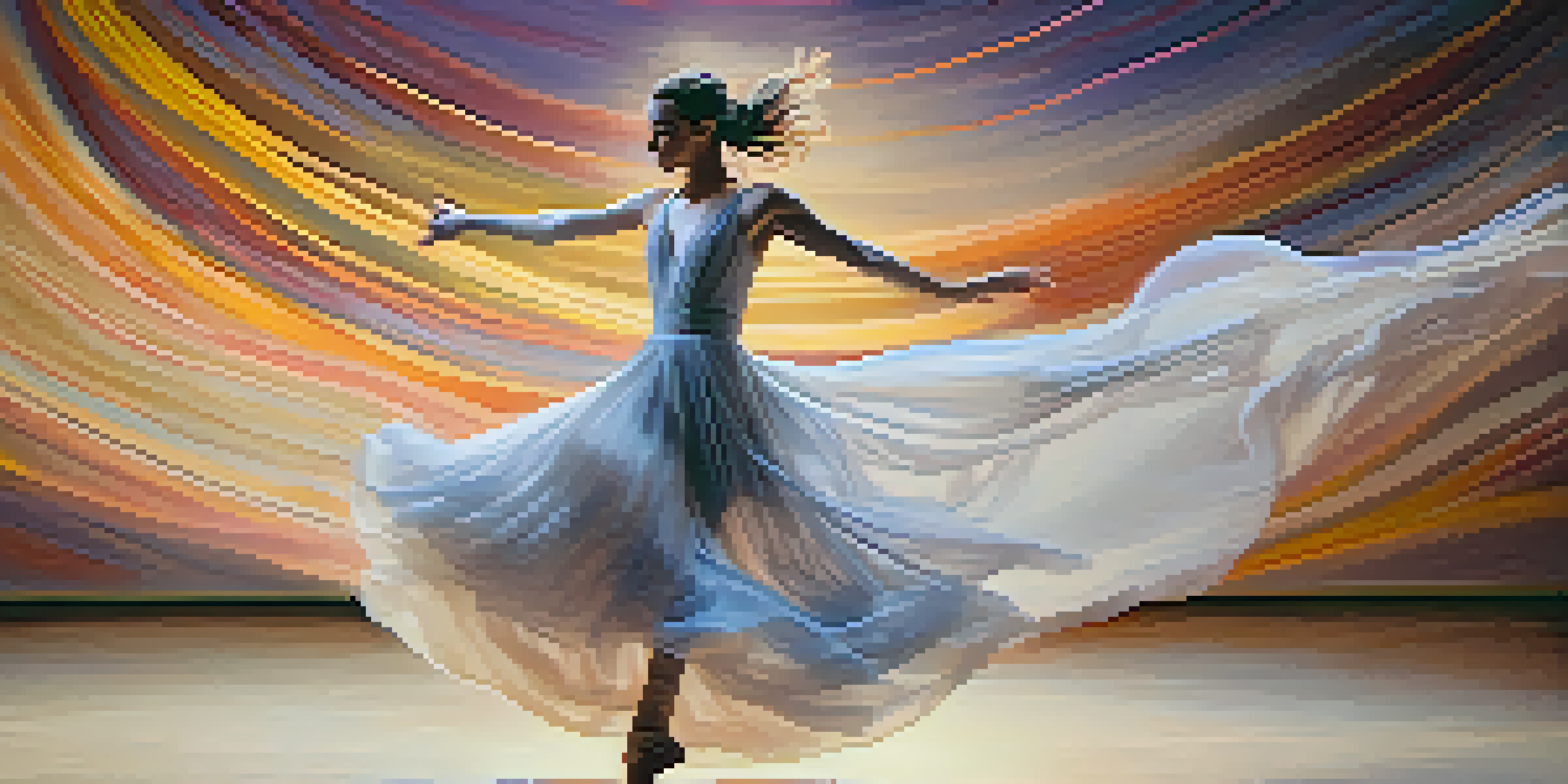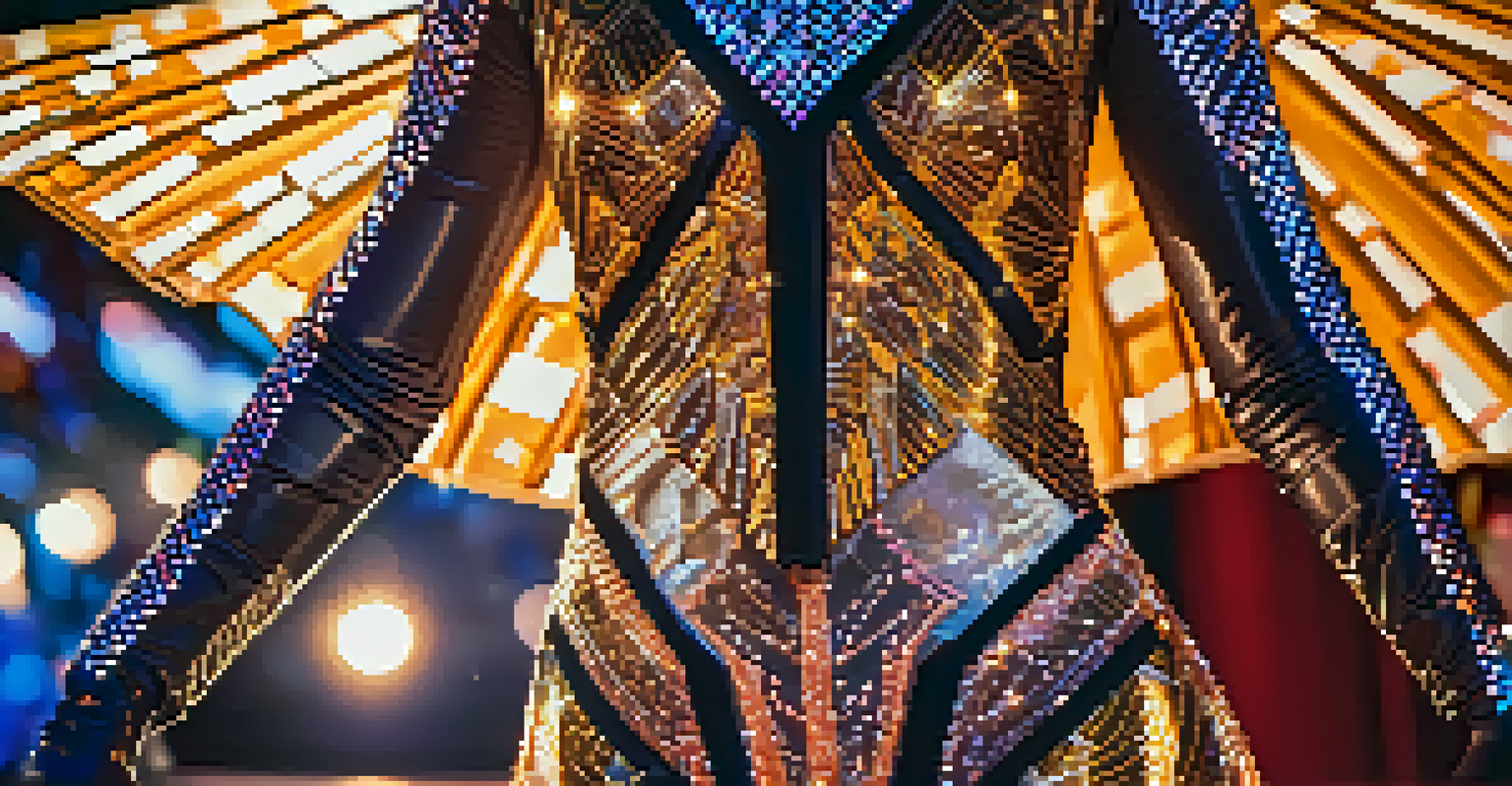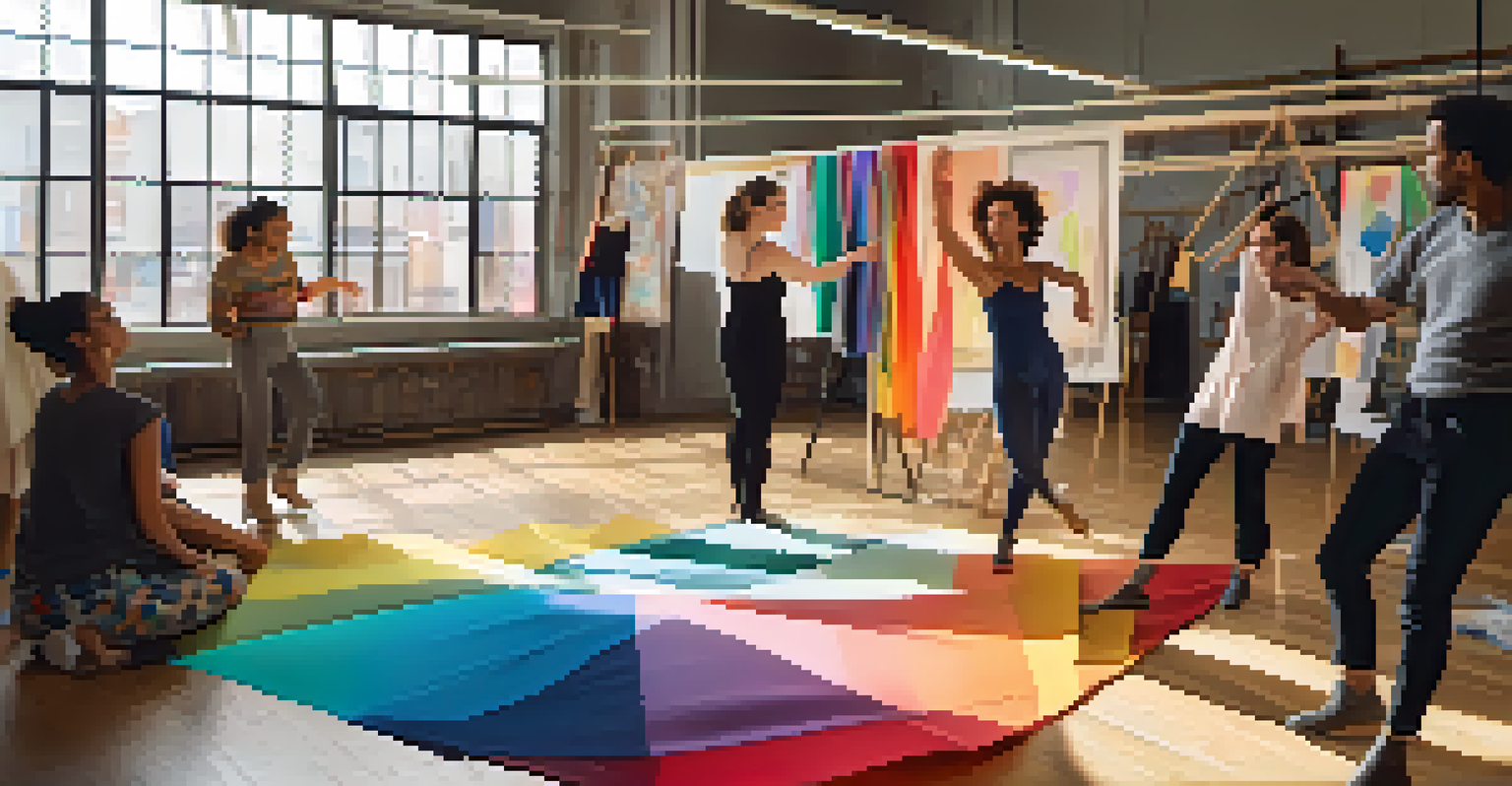Costume Design Techniques for Modern Dance Performance

Understanding the Role of Costumes in Dance Performance
Costumes in dance serve more than just a decorative purpose; they enhance storytelling and character development. In modern dance, where expression is key, the right costume can embody a dancer's emotion and movement. Think of a flowing gown that mirrors the grace of a dancer's leaps or a structured outfit that accentuates sharp, precise movements.
Dance is the hidden language of the soul.
Moreover, costumes can create a visual narrative that supports the choreography, helping the audience connect with the performance on a deeper level. For example, a costume that changes color or texture can symbolize a character's transformation throughout the piece. This interplay between costume and dance is what makes modern performances so engaging and memorable.
Ultimately, understanding the role of costumes allows designers to craft pieces that not only look stunning but also serve the artistic vision of the performance. As we move forward, let's explore specific techniques that can help achieve this synergy.
Choosing the Right Materials for Movement
When it comes to costume design for modern dance, the choice of materials is crucial. Fabrics must not only look good but also allow for unrestricted movement. Lightweight and stretchy materials like spandex or jersey are often ideal, as they can hug the body while providing flexibility.

In addition to flexibility, breathability plays a significant role in dancer comfort. When selecting materials, consider how they will perform under stage lights and during intense physical activity. A breathable fabric can help keep dancers cool and focused, allowing them to perform at their best.
Costumes Enhance Dance Storytelling
Costumes play a crucial role in modern dance by visually supporting the narrative and character development.
Furthermore, the texture of the fabric can impact the visual aesthetic of the performance. For instance, sheer fabrics can create an ethereal look, while heavier materials can add depth and weight to movements. Balancing these aspects is key to achieving the desired effect in modern dance costumes.
Incorporating Color Theory in Costume Design
Color is a powerful tool in costume design, influencing mood and perception in modern dance. By understanding color theory, designers can choose hues that resonate with the emotional tone of a performance. For example, warm colors like red and orange can evoke energy and passion, while cool colors like blue and green may convey calmness and serenity.
Costume design is not just about clothes; it’s about character and story.
Moreover, the combination of colors can create a striking visual impact. A well-thought-out color palette can unify the dancers on stage and enhance the choreography. Picture a group of dancers in varying shades of blue, moving in unison; the effect can be mesmerizing and add to the overall theme of the performance.
In modern dance, where expression is key, the right colors can help convey a narrative without the need for words. As we delve deeper, let's look at how patterns and textures also play a role in visual storytelling.
Utilizing Patterns and Textures to Enhance Movement
Patterns and textures are not just decorative elements; they can dramatically influence how a performance is perceived. Bold patterns can draw the audience's eye and emphasize particular movements, while subtle textures can add depth and interest to a costume. For instance, a costume with a geometric pattern might parallel sharp, angular choreography.
Additionally, textures can create a tactile dimension that resonates with the audience. A dancer's costume might feature sequins that catch the light during a spin, adding a dazzling effect to their performance. This interplay between the dancer and their costume can elevate the overall experience for viewers.
Material Choice Affects Performance
Selecting the right materials is essential for costume design, as they must provide both flexibility and comfort for dancers.
By thoughtfully integrating patterns and textures, costume designers can enhance the storytelling aspect of modern dance, making the performance more immersive and impactful. Next, let's explore the importance of collaboration between choreographers and designers.
Collaboration Between Choreographers and Costume Designers
The relationship between choreographers and costume designers is vital for a successful modern dance performance. When both parties collaborate closely, they can ensure that costumes complement the movement rather than hinder it. Regular discussions about the choreography can lead to insights that shape the costume design process.
For instance, a choreographer might envision a specific movement that requires a costume with a particular silhouette or functionality. By working together, they can create costumes that not only look beautiful but also facilitate the necessary movements. This teamwork is essential in making sure the dancer's abilities are showcased to their fullest.
Moreover, this collaboration can lead to innovative ideas and unexpected solutions that enhance the performance. When designers and choreographers share their visions, the end result can be a seamless blend of movement and attire that captivates the audience. Now let's shift our focus to the practical side of costume design: budgeting and sourcing materials.
Budgeting Wisely for Costume Design Projects
Budgeting plays a crucial role in costume design, especially in modern dance performances where resources might be limited. It's important for designers to create a realistic budget that accounts for materials, labor, and any necessary fittings. This not only helps in managing costs but also ensures that the design vision is achievable.
When budgeting, consider sourcing materials that are both cost-effective and suitable for dance. For instance, some designers opt for off-the-rack options that can be modified, saving time and money while still achieving a unique look. Thrift stores or online marketplaces can also be treasure troves for creative costume elements.
Collaboration Is Key to Success
The partnership between choreographers and costume designers is vital for creating costumes that enhance movement and storytelling.
By being resourceful and strategic in budgeting, designers can create stunning costumes that fit within their means. This careful planning allows for more creative freedom without compromising on quality. As we wrap up, let's discuss the importance of fitting and adjustments for achieving the perfect look.
The Importance of Fitting and Adjustments in Costumes
Fitting and adjustments are essential steps in the costume design process, particularly for modern dance performances. A well-fitted costume not only enhances the dancer's comfort but also allows for better freedom of movement. When costumes fit properly, dancers can perform with confidence, knowing that they won't be hindered by their attire.
During fittings, it's crucial to observe how a costume interacts with the dancer's movements. Designers should make adjustments as needed, ensuring that everything from hems to armholes accommodates the choreography. This attention to detail can make all the difference in a performance.

Ultimately, the fitting process is an opportunity for collaboration between the designer and the dancer. By working together, they can create costumes that are visually stunning and functional, ensuring that both artistry and movement shine on stage. With these techniques in mind, costume designers can truly elevate modern dance performances.